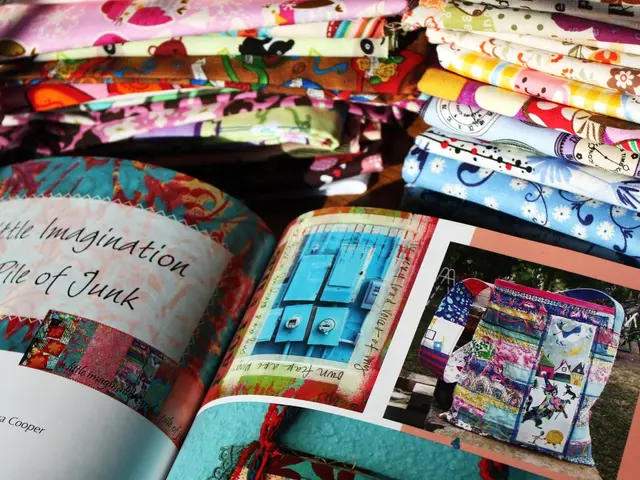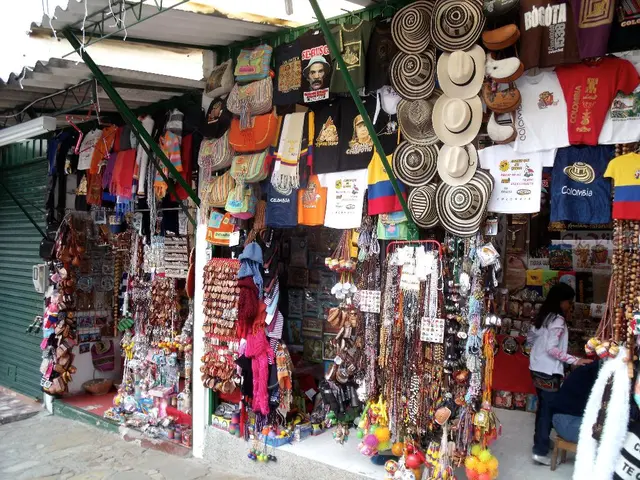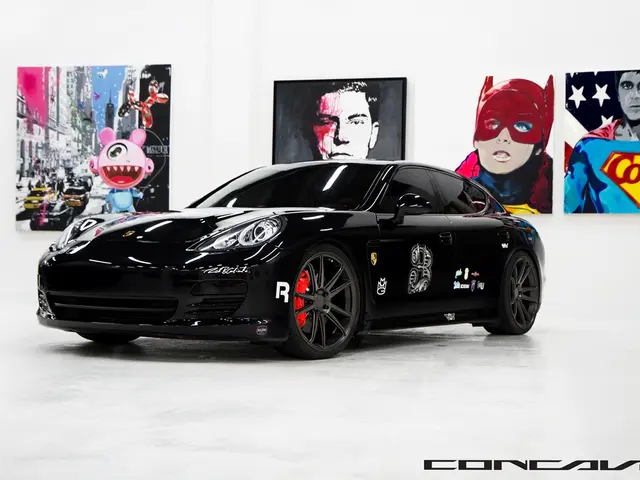Translating Color Theory into Daily Fashion Choices
Diving into the fascinating world of color theory can take your fashion game to new heights! Instead of just throwing things together, gut feelings can now be backed up by knowledge. Let's unravel the basics and delve into how colors communicate mood, personality, and messages - laying the groundwork for stylish, well-thought-out ensembles.
The Color Wheel's Secret Language
Color theory is essentially like learning an entirely new language, but instead of words, you're crafting masterpieces with hues. The color wheel reveals how primary colors (red, blue, yellow) combine to form secondary shades (green, orange, purple), and these in turn blend into a spectrum of tertiary hues - all waiting to be utilized in your wardrobe.
From the get-go, you'll subconsciously apply concepts like complementary (opposing colors), analogous (adjacent colors), and monochromatic (single hue) color schemes to solve that age-old question, "What should I wear today?" Each approach can subtly impact an outfit's overall vibe, ensuring you're sending the right message, whether you're aiming for high-contrast or soothing sophistication.
Colors that speak volumes
The power of colors isn't merely illusion; they can evoke emotions like magic, influencing both your self-perception and others'. Opt for warm tones like red, orange, and yellow to project energy, optimism, and warmth, or lean towards cooler tones (blue, green, purple) to convey calm, elegance, and reserve.
On the verge of an important job interview? A navy or slate ensemble will exude professionalism and reliability. Chasing a relaxed, carefree mood on a casual day out? The soft allure of pastels like lavender or mint can be your ally, projecting approachability and ease. By aligning your clothing with your emotional goals and social context, fashion can truly become an art form.
Color harmony in modest fashion
Modest fashion, featuring layering, long cuts, and a more muted palette, benefits greatly from thoughtful color coordination. This is where color theory doesn't merely enhance the look, but ensures cohesion, especially when textures and fabric weights are mixed. A beige tunic and wide-leg trousers, for instance, can create a harmonious look with an earthy color palette of soft browns, creams, or dusty pinks.
Accessories like hijabs, scarves, and shoes often serve as focal points. Their color choice can either ground an outfit or elevate it, tying multiple elements together or introducing a pop of contrast that demands attention.
The multifaceted charm of blue
One of the most universally flattering colors, blue symbolizes serenity, depth, and stability. Employing blue in your wardrobe can be particularly effective in both casual and formal setups; luxury materials like chiffon enhance its #powerinblue. Case in point? A captivating blue chiffon hijab seamlessly elevates any outfit, staying within the modest aesthetic while emitting tranquility and visual harmony. Pair it with a white abaya for a fresh summer look or match it against deeper jewel tones for dramatic contrast - sterling choices for your wardrobe arsenal!
Playing the ever-changing color trends game
The fashion world introduces bold trending shades each season, but understanding color theory means you're not just a follower; you're a thoughtful adopter. While you don't have to jump on the neon green bandwagon if it doesn't appeal, you can opt for a muted take on these trends, like a dusty coral, while keeping the rest of your look within your preferred range of tones. This flexible approach allows you to remain current without compromising your unique style!
Parting thoughts
Color theory may seem like something reserved for art classrooms, but it's a potent weapon capable of transforming ordinary wardrobe choices into bold, personal expressions. By grasping how colors interact, impact emotions, and shape perceptions, you can dress more confidently, thoughtfully, and stylishly - whether you're playing with complementary colors or elevating an outfit with a blue chiffon hijab. Allow your wardrobe to become a canvas for your story, reflected in the colors you choose to wear.
- Colors not only influence our emotional state and self-perception, but they can also help us craft a cohesive and personal wardrobe, as color theory serves as a secret language, allowing us to communicate mood, personality, and messages through hues, widely used in the realms of fashion and beauty, as well as home and garden, education and self-development, and personal growth.
- By leveraging color theory, modest fashion enthusiasts can create harmonious outfits, ensuring cohesion in their ensembles. This approach not only enhances the look of their clothing but also mirrors the principles of education and self-development, adding a layer of thoughtful consideration and personal growth to their style, establishing a strong connection between the color wheel's secret language and their daily lives.








